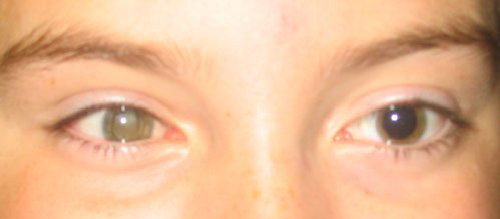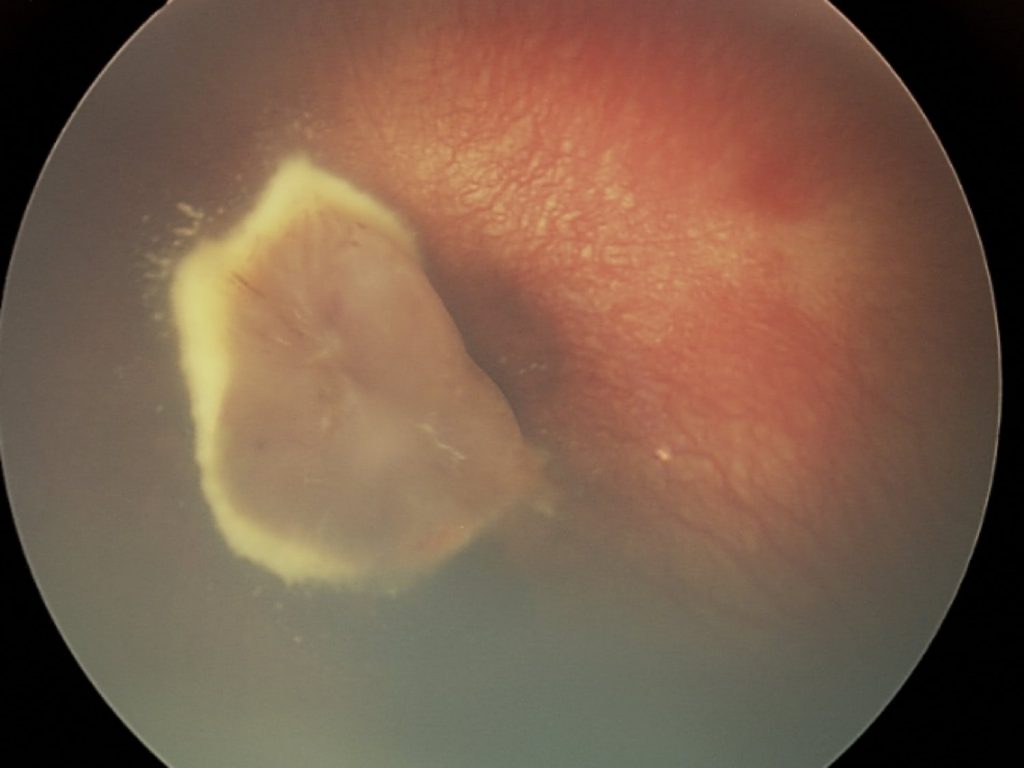CASE REPORT
A family was referred to a hospital for childbirth risk prognosis at 7–8 weeks of gestation because a previous child, a six-year-old boy, has congenital aniridia, glaucoma, retinal detachment, severe psychomotor delay, and lack of speech and has had several ophthalmic surgeries.
The affected child had been previously tested for PAX6 mutations and 11p13 copy number variations, which revealed no changes. Considering the lack of pathogenic changes and precise diagnosis for the affected boy, NGS sequencing of clinically relevant genes was performed for the ongoing pregnancy; it revealed a novel hemizygous substitution NM_000266.3(NDP):c.385G > T, p.(Glu129*), in the NDP gene, which is associated with Norrie disease.

Norrie Disease Entity
Norrie disease is a rare genetic disorder that primarily affects the retina, usually leading to blindness. In addition to the congenital ocular symptoms, patients may suffer from other systemic symptoms, including childhood-onset progressive hearing loss, abnormal sleep-wake cycles, peripheral vascular disease, and learning or behavioral problems.
Patients with Norrie disease may develop retinal detachment, cataracts, leukocoria, iris atrophy as well as other developmental issues in the eye. Patients may experience psychotic-like features and poor coordination of movements.

Most patients are born with normal hearing with the onset of hearing loss commonly seen in the second decade of life. Apart from retinal disease, there is significant variance in additional symptoms with only 15% of patients estimated to develop all the features of the disease.
The disease affects almost only male infants, owing to its X-linked recessive inheritance, although females have been reported to show milder features of the disease.
MANAGEMENT of Norrie Disease
Norrie disease treatment requires the coordinated efforts of a team of specialists. Ophthalmologists, pediatricians, audiologists, and other healthcare professionals may need to systematically and comprehensively plan an affected child’s treatment.

Medical therapy
At present, there is no medical therapy useful for the ocular manifestations of the disease. Behavioral issues are a lifelong challenge to many individuals with Norrie disease and to their guardians/caretakers, in the presence or absence of intellectual disability or cognitive impairment.
Intervention and therapy are supportive and aimed at maximizing educational opportunities. An empiric trial of psychotropic medications may be warranted, although no studies have addressed or supported the use of specific medications for the treatment of behavioral aspects of Norrie disease.
Surgery
The majority of males with the classic Norrie disease (ND) phenotype have complete retinal detachment at birth; therefore, surgery is often targeted toward the prevention of further complications.
Treatment for partial retinal detachment includes pars plicata/plana vitrectomy or limbal lensectomy/vitrectomy, laser therapy, and/or cryotherapy with the potential for improved outcomes if done at an early stage.
Planned preterm birth with early laser treatment has led to retinal attachment and vision, even when additional vitreoretinal surgery is needed to treat traction.
Some reports have described successful laser photocoagulation at birth, helping preserve some degree of visual function. Other reports mention that early vitrectomy (done by age 12 months) can help with the maintenance of light perception vision in at least one eye. There have been no systematic clinical studies indicating a preferred method of surgical treatment that can be used on all patients, especially regarding the variability of the disease. Each patient should be studied individually to determine if surgery is a possibility and to find the best treatment options.
In the progressive stages of ND, the development of increased intraocular pressure may also require glaucoma surgery. Rarely, in the most severe cases, enucleation of the eye is required to control ocular pain.
Would you have interest in taking retina images by smartphone?
Fundus photography is superior to fundus analysis as it enables intraocular pathologies to be photo-captured and encrypted information to be shared with colleagues and patients.
Recent technologies allow smartphone-based attachments and integrated lens adaptors to transform the smartphone into a portable fundus camera and Retinal imaging by smartphone.
RETINAL IMAGING BY YOUR SMARTPHONE
REFERENCES
- Parkes. Genetic factors in human sleep disorders with special reference to Norrie disease, Prader-Willi syndrome and Moebius syndrome. Journal of Sleep Research. 1999;8(S1):14-22. doi:10.1046/j.1365-2869.1999.00004. x.
- Holmes, L. B. Norrie’s disease–an X-linked syndrome of retinal malformation, mental retardation and deafness. New Eng. J. Med. 284: 367-368, 1971.
- Nikopoulos K, Venselaar H, Collin RW, et al. Overview of the mutation spectrum in familial exudative vitreoretinopathy and Norrie disease with identification of 21 novel variants in FZD4, LRP5, and NDP. Hum Mutat. 2010 Jun;31(6):656-66.
- Sims KB. Updated:July 23,2009 . NDP-Related Retinopathies. In: GeneReviews at GeneTests: Medical Genetics Information Resource (database online). Copyright, University of Washington, Seattle. 1997-2012.
- Chamney S, McLoone E, Willoughby CE. A mutation in the Norrie disease gene (NDP) associated with familial exudative vitreoretinopathy. Eye (Lond). 2011 Dec;25(12):1658.
- Walsh MK, Drenser KA, Capone A Jr, Trese MT. Norrie disease vs familial exudative vitreoretinopathy. Arch Ophthalmol. 2011 Jun;129(6):819-20.
RETINAL IMAGING BY YOUR SMARTPHONE

RETINAL IMAGING BY YOUR SMARTPHONE

